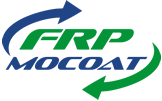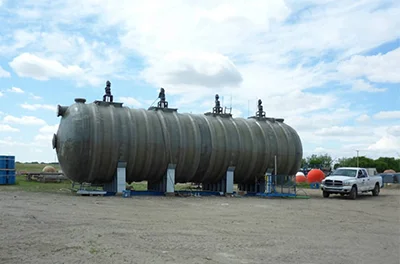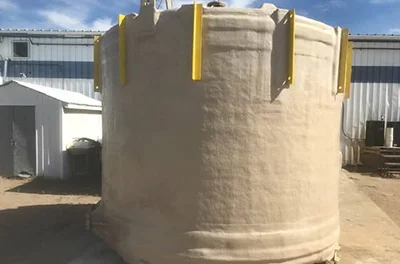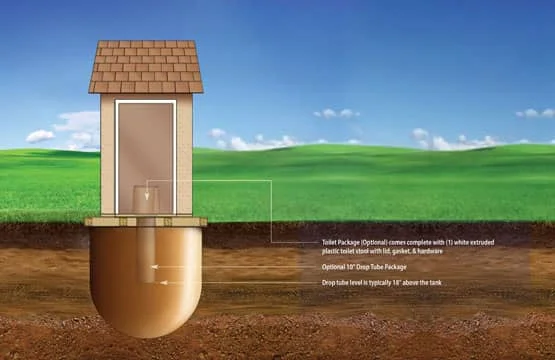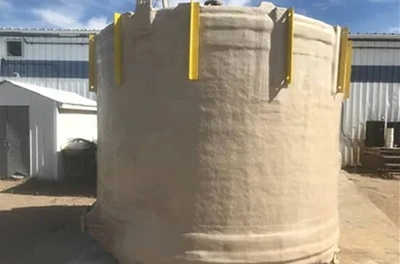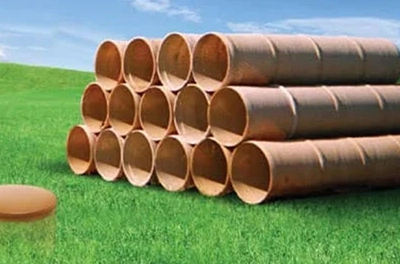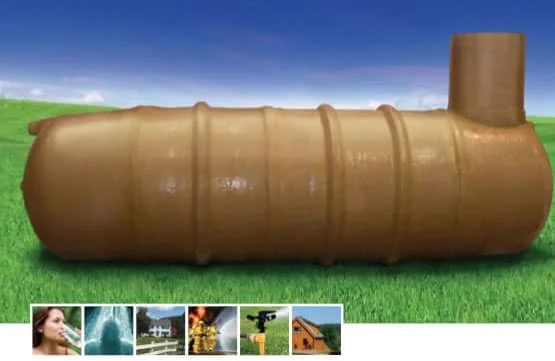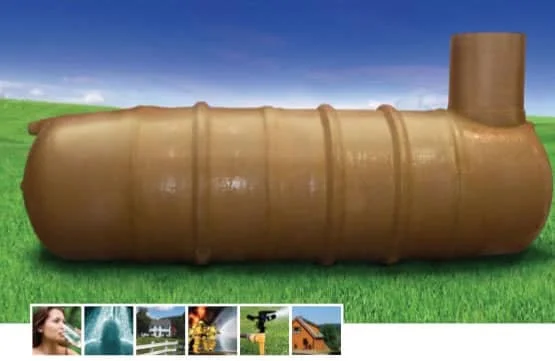Flocculation Tanks in Canada
Flocculation is the process of separating a solution, typically by removing sediment from a fluid. The term comes from “floc,” meaning flakes of material; when a solution undergoes flocculation, the sediment forms larger, aggregated flakes that are easier to see and remove. This phenomenon can occur spontaneously or be initiated using flocculants or physical techniques.
Flocculation is commonly used in stormwater and wastewater treatment, and drinking water purification. A crucial requirement for treated water from wastewater plants is the removal of suspended solids. These small particles can alter the water’s color and introduce impurities into natural water sources such as rivers and oceans.
FRP Mocoat Fiberglass Ltd provides a comprehensive range of wastewater holding tanks and equipment. We sell high-quality flocculation tanks at a bargain price.
What Happens in a Flocculation Tank?
In a water treatment flocculation tank, a coagulant is added to the water to initiate the flocculation process. The water is rapidly mixed to ensure the coagulant is evenly distributed.
Most flocculation tanks use hydraulic or mechanical methods to promote collisions between particles in the water, leading to the formation of flocs, or aggregated particles.
The coagulated water can then be filtered directly through a medium filter, such as sand and gravel, a microfiltration or ultrafiltration membrane, or it can be moved to a settling tank. In a settling tank, also known as a clarifier, the heavy particles settle to the bottom and are removed. Once the coagulation and flocculation process is complete, the floc is ready to be removed during the sedimentation and clarification process.
What Chemicals Are Used in Flocculation?
The flocculation process involves adding iron or aluminum salts, such as aluminum sulfate, ferric sulfate, ferric chloride, or polymers, to the water. These chemicals, referred to as coagulants, carry a positive charge. The positive charge of the coagulant neutralizes the negative charge of dissolved and suspended particles in the water, causing them to bind together in a process known as flocculation.
Where Are Flocculation Tanks Used?
Flocculation tanks are used in various applications, including:
- Wastewater treatment plants: to remove suspended solids and contaminants from sewage and industrial wastewater.
- Drinking water treatment facilities: to clarify and purify water by removing particles and impurities.
- Stormwater treatment systems: to treat runoff water, reducing pollutants before it enter natural water bodies.
- Mining operations: to treat water used in mining processes, removing fine particles and contaminants.
- Food and beverage industry: to clarify process water and wastewater, ensuring product quality and environmental compliance.
- Pharmaceutical industry: to treat process water and wastewater, maintaining high purity standards.
- Chemical manufacturing: to treat industrial effluents, removing suspended solids and chemical residues.
- Pulp and paper industry: to treat process water and reduce pollutants in wastewater.
Flocculation tanks play a crucial role in improving water quality across these diverse applications.
How to Select and Buy a Durable Flocculation Tank?
To select and buy a high-quality flocculation tank, consider the tank’s material, ensuring it is resistant to corrosion and chemicals used in the flocculation process. Evaluate the tank’s capacity and dimensions to match your treatment plant’s requirements. Look for features such as robust mixing mechanisms and easy maintenance access.
Determine Your Requirements
Calculate the required volume and capacity of the tank based on the flow rate and the amount of water to be treated. Consider future expansion needs as well.
Measure the available space for the flocculation tank installation. Determine whether the tank will be placed indoors or outdoors, as this will affect material and design choices.
Material Selection
- Polyethylene (PE). Often used for its chemical resistance and durability.
- Cross-Linked Polyethylene (XLPE). Offers superior temperature resistance compared to standard PE.
- Steel-Lined with Polyethylene. Provides additional strength and durability for harsh environments.
- Fiberglass Reinforced Plastic (FRP). Lightweight and resistant to a wide range of chemicals. Flocculation tanks made from FRP offer several advantages. They are highly resistant to chemical corrosion, making them ideal for harsh environments. Additionally, they are lightweight, which makes them easier to transport and install compared to traditional materials like steel. FRP tanks are also durable, requiring minimal maintenance, and they can be molded into various shapes and sizes to meet specific needs. Furthermore, they are cost-effective, with lower lifetime costs due to reduced maintenance and longer service life.
Chemical Compatibility
Ensure the tank material is compatible with the specific chemicals used, such as aluminum sulfate, ferric chloride, and polymers. Consult chemical compatibility charts if needed.
Temperature Resistance
Assess the maximum and minimum temperatures the flocculation tank will be exposed to. Choose materials that can endure these conditions without experiencing deterioration.
For elevated temperatures (e.g., alum delivered at 52°C), consider tanks with better temperature limits or additional features like insulation and heat tracing.
Features and Design
- Translucent tanks. Allow for visible level indication.
- Level gauges. Reverse float level gauges are economical and reduce the risk of leaks.
- Electronic sensors. Provide precise level readings and can be integrated with automated systems.
Opt for tanks with effective hydraulic or mechanical mixing systems to promote particle collisions and floc formation. Look for tanks with full-drain capabilities or outlets positioned to minimize sludge buildup. Some designs include inclined bottoms or hopper bottoms for easier sludge removal.
Maintenance and Durability
Choose a flocculation tank in Canada (Saskatchewan, Alberta, or Manitoba) with features that make maintenance easy, such as accessible manways, cleanout ports, and smooth interior surfaces to prevent residue buildup.
Consult with the chemical tank specialists or engineers at FRP Mocoat Fiberglass Ltd to ensure that your chosen tank meets all technical and performance requirements.
Custom-Made Flocculation Tanks in Canada
With the experienced technicians and engineers at FRP Mocoat Fiberglass Ltd, we offer comprehensive flocculation tank fabrication services tailored to meet the needs of any industry.
Most importantly, we collaborate closely with you and your team to understand and define your specific requirements, ensuring that we deliver the best solution for your unique maintenance needs. You can order a flocculation tank by calling (306) 329-4884.
